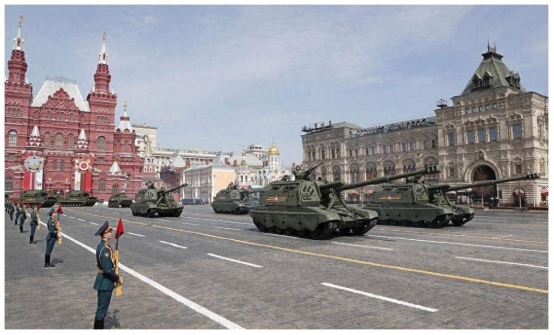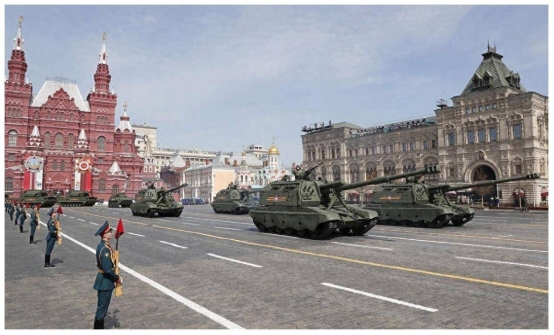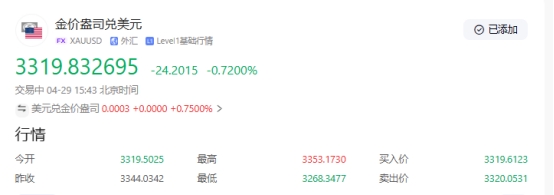Zelensky criticizes Putin's ceasefire proposal: Russia-Ukraine conflict remains stalemate
- 2025年4月30日
- Posted by: Macro Global Markets
- Category: News

In recent days, the conflict between Russia and Ukraine has once again escalated, becoming the focus of global attention. After Putin proposed a 72-hour ceasefire, Zelensky angrily denounced it, saying that Russia was "trying to manipulate the situation again." The conflict between the two sides was further intensified, and this tense situation had a significant impact on the financial markets, especially the gold market.

On April 28, the Kremlin issued a statement saying that out of humanitarian considerations and in accordance with the decision of Russian Supreme Commander-in-Chief Vladimir Putin, a ceasefire measure will be taken in the special military operations area during the celebration of the 80th anniversary of the victory of the Great Patriotic War, that is, all military operations will be suspended from 0:00 on May 8 to 0:00 on May 11, local time.
However, Zelensky responded strongly through social media, accusing Russia of "an attempt to use the ceasefire to redeploy troops and consolidate positions, which is another violation of Ukraine's sovereignty." It also suggested that a ceasefire should not just last for a few days, after which the killing would resume. The ceasefire must be immediate, comprehensive and unconditional, lasting at least 30 days to ensure it is safe and secure.
As the ceasefire proposal failed, military operations by both sides quickly resumed and became more intense. On April 27, the Russian army launched a drone attack on the Ukrainian port of Odessa, causing three grain ships to catch fire, damaging some port facilities and blocking grain exports. The Ukrainian army shelled civilian facilities in Donetsk, causing more than 200 new civilian casualties in a single day. According to statistics, the intensity of fighting in the conflict area has increased by 35% compared to last month, and the lives of local people have fallen into deeper difficulties.
2. The game behind the scenes: deep competition between geopolitics and strategic interests
There are complex geopolitical and war interest factors behind this statement conflict. From a geopolitical perspective, Russia and Ukraine have long-standing differences over territorial sovereignty and regional influence. The issue of Crimea's sovereignty and the demand for autonomy in the Donbas region have always been the focus of the conflict between the two sides. Russia hopes to stabilize the situation and safeguard its own interests in the region through a ceasefire, while Ukraine is worried that a ceasefire will give Russia a strategic advantage and threaten its sovereignty and territorial integrity.
In terms of strategic interests, the involvement of the United States and Europe has made the situation more complicated. By providing military assistance to Ukraine, the United States is trying to maintain tensions between Russia and Ukraine in order to enhance its influence in Europe; although some European countries hope that the conflict will end soon, they have differences in their policies toward Russia, and some countries continue to provide military support to Ukraine, which has also contributed to Ukraine's tough attitude to a certain extent.
3. Gold market: Risk aversion heats up, prices fluctuate upward
The continued escalation of the Russia-Ukraine conflict has led to a sharp rise in risk aversion in the market, and gold, as a traditional safe-haven asset, has been favored by investors. As of the Asian session on April 29, spot gold fluctuated at $3,319.83 per ounce. It is up 7.2% from April 1, before the conflict escalated.

Looking ahead, the direction of the Russia-Ukraine conflict remains full of uncertainty. If the conflict escalates further, gold's safe-haven value will continue to stand out and it is expected to break out of the current range and challenge the resistance level of $3,370 or even higher. However, if the diplomatic mediation of the international community achieves substantial progress and the two sides achieve a ceasefire, the market's risk aversion sentiment may cool down quickly and gold prices will face pressure to fall back.
In addition, US economic data also has an important impact on the gold market. The upcoming U.S. non-farm data on May 3 (an increase of 135,000 is expected), if the data is strong, may increase market expectations that the Federal Reserve will maintain the current interest rate level, push up the U.S. dollar, and thus suppress gold prices; conversely, if the data is lower than expected, it may strengthen market expectations for the Federal Reserve to cut interest rates and boost gold prices.
The tension in the current Russia-Ukraine conflict has had a profound impact on the gold market. Investors need to respond with caution and fully recognize market uncertainties while seizing investment opportunities. Subsequent developments deserve continued attention.
